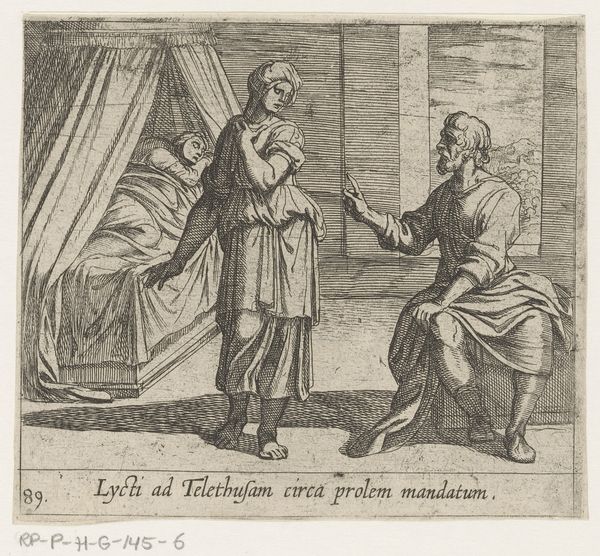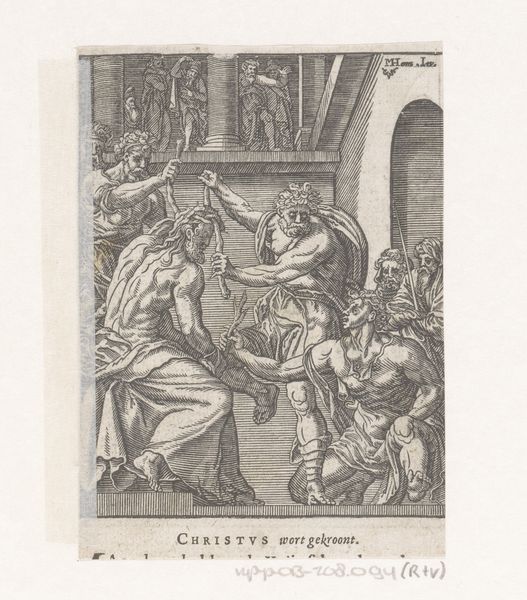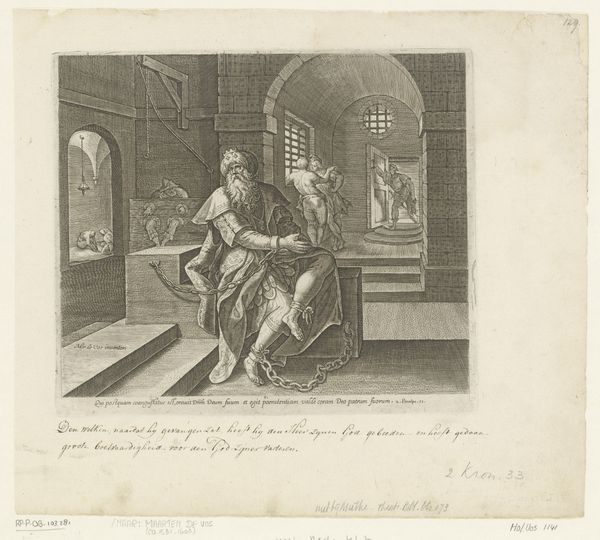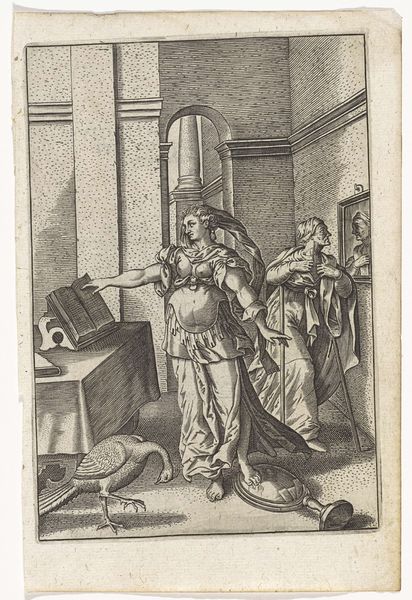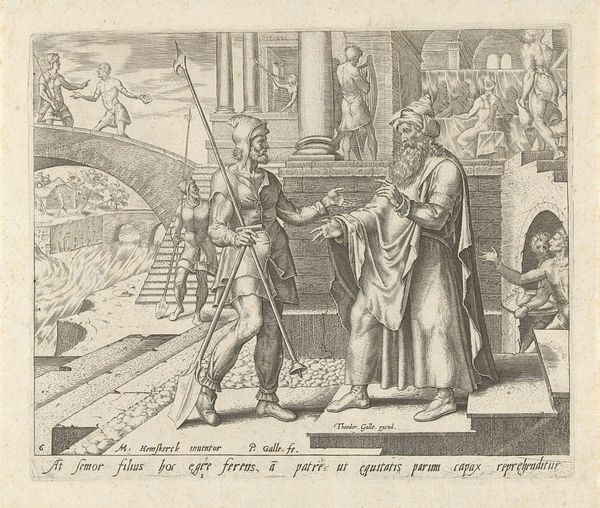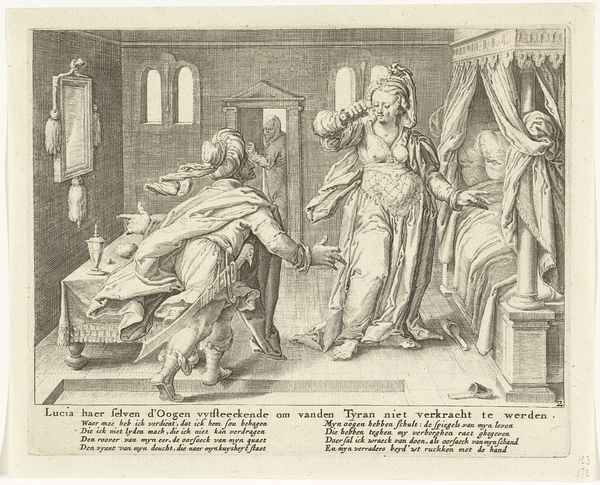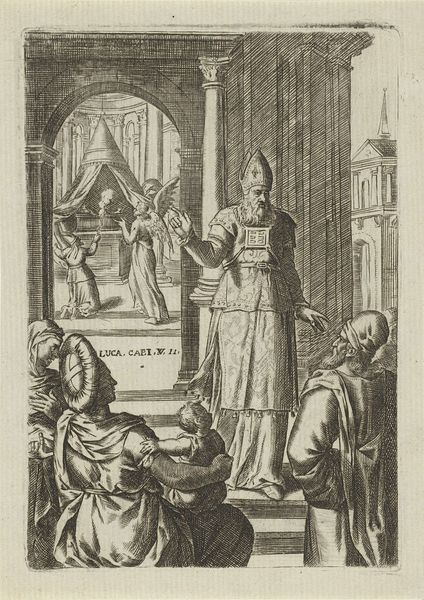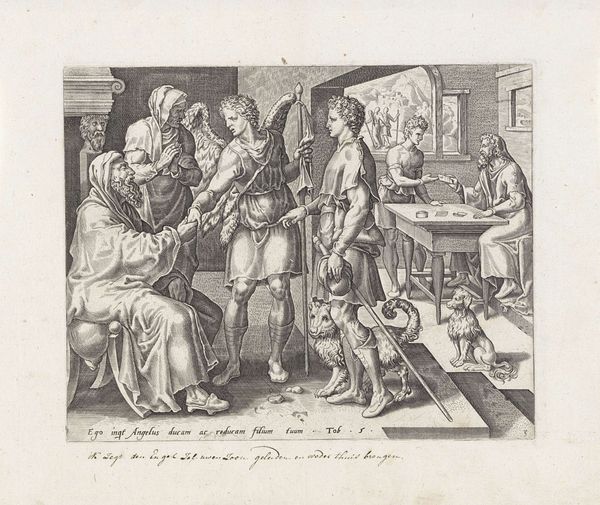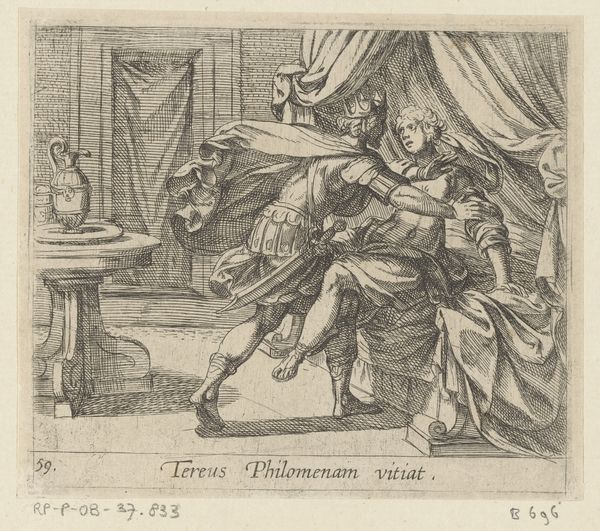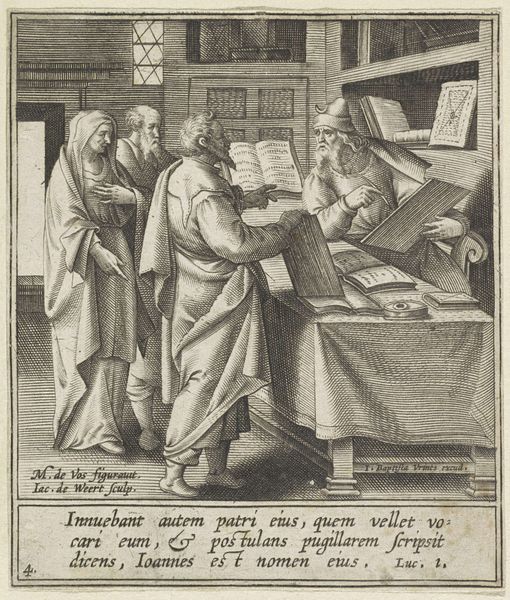
print, engraving
#
allegory
#
baroque
# print
#
figuration
#
history-painting
#
engraving
Dimensions: height 104 mm, width 117 mm
Copyright: Rijks Museum: Open Domain
Curator: This is "Minerva verandert Arachne in een spin," or "Minerva Turns Arachne into a Spider," a 1606 engraving by Antonio Tempesta, held here at the Rijksmuseum. Editor: It has a strange coolness to it, a distant almost frigid air. The meticulous lines, the lack of tonal warmth, makes the figures seem more like constructs than people. Curator: Absolutely. Consider how Tempesta, working with the relatively new printmaking medium, used the engraving to disseminate classical mythology in early modern Europe. His workshop production would have relied on the labor of skilled artisans carefully incising these fine lines into the copper plate, translating Ovid’s narrative for a wider audience. The choice of engraving was itself crucial to distribute stories widely. Editor: Indeed. I notice the formal division—the balanced symmetry framing two dominant figures in precise detail against architectural elements. Semiotic tension comes from contrasting Minerva's imposing stance, holding a shield, gesturing powerfully toward Arachne at her loom. We see how power dynamics manifest purely through gesture and spatial dominance. Curator: This print allows us to see the transformation less as a magical act, but more as a transformation of labor, in which Arachne’s craft is literally and figuratively dehumanized as she becomes the instrument of her own downfall—the means of production turning against its master. Think about who the art was aimed at! Editor: The very precision of the engraving mirrors Arachne's skill, the flawless execution ironically echoing her doomed hubris. Minerva, in her rigid pose, embodies order and restraint, against Arachne whose body language betrays her vulnerability at her loom in the moment before her mutation. Curator: Tempesta emphasizes a world where the work of hands— loom work, artistry— is circumscribed, judged. Think of the artist’s own hand producing this print! Who decides value? Editor: True. By examining the formal structure, its composition and texture, a wider semiotic discourse regarding authority, defiance, and ultimately, transformation emerges so clearly. It resonates powerfully to this day.
Comments
No comments
Be the first to comment and join the conversation on the ultimate creative platform.
